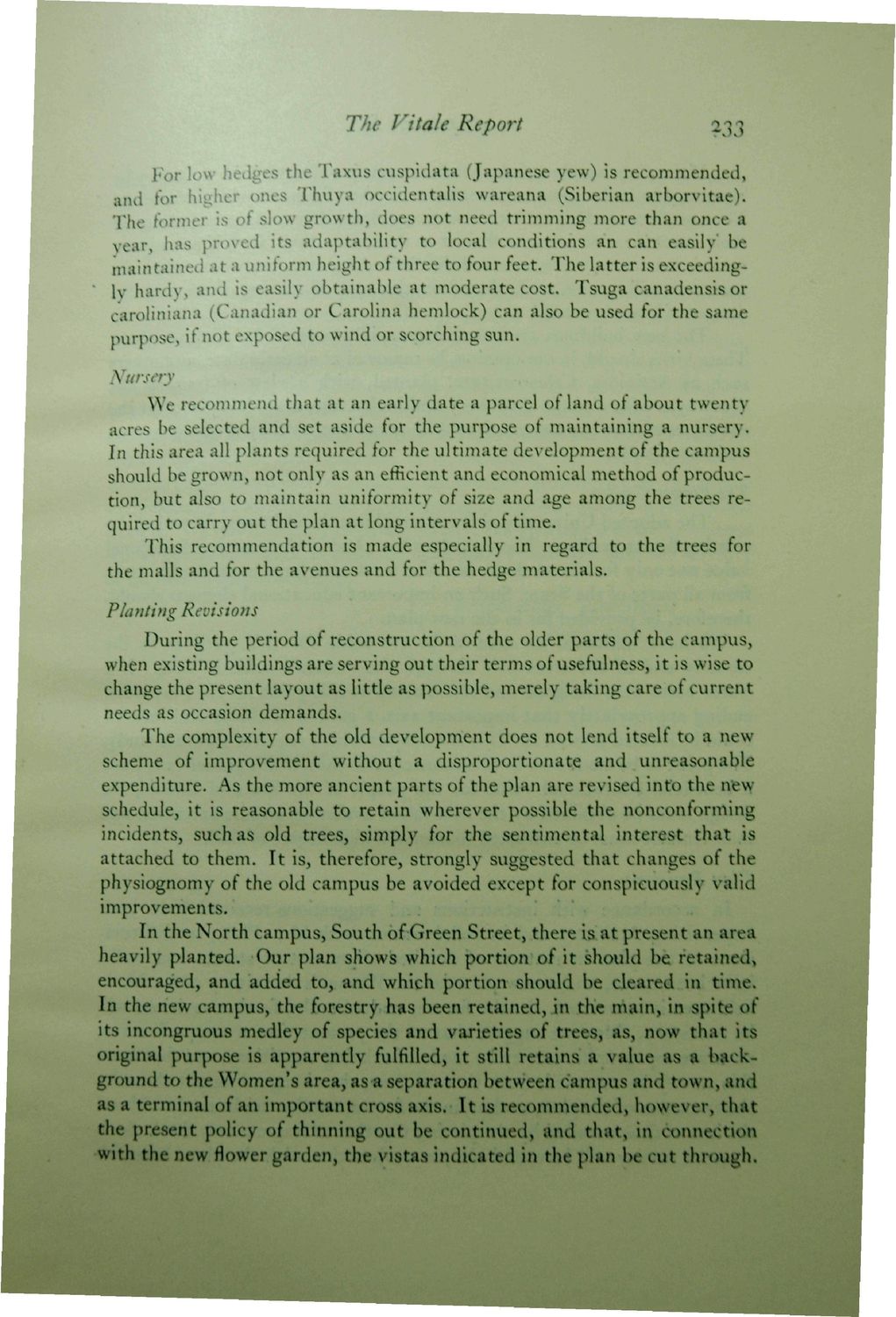| |
| |
Caption: Book - 30 Year Master Plan (Tilton & O'Donnell)
This is a reduced-resolution page image for fast online browsing.

EXTRACTED TEXT FROM PAGE:
The Vitale Report %$$ For low hedges the Taxus cuspidata (Japanese yew) is recommended, and for higher ones Thuya occidentalis wareana (Siberian arborvitae). The former is of slow growth, does not need trimming more than once a year has proved its adaptability to local conditions an can easily be maintained at a uniform height of three to four feet. The latter is exceedingly hardy, and is easily obtainable at moderate cost. Tsuga canadensis or caroliniana (Canadian or Carolina hemlock) can also be used for the same purpose, if not exposed to wind or scorching sun. Nursery We recommend that at an early date a parcel of land of about twenty acres be selected and set aside for the purpose of maintaining a nursery. In this area all plants required for the ultimate development of the campus should be grown, not only as an efficient and economical method of production, but also to maintain uniformity of size and age among the trees required to carry out the plan at long intervals of time. This recommendation is made especially in regard to the trees for the malls and for the avenues and for the hedge materials. Planting Revisions During the period of reconstruction of the older parts of the campus, when existing buildings are serving out their terms of usefulness, it is wise to change the present layout as little as possible, merely taking care of current needs as occasion demands. The complexity of the old development does not lend itself to a new scheme of improvement without a disproportionate and unreasonable expenditure. As the more ancient parts of the plan are revised into the new schedule, it is reasonable to retain wherever possible the nonconforming incidents, such as old trees, simply for the sentimental interest that is attached to them. It is, therefore, strongly suggested that changes of the physiognomy of the old campus be avoided except for conspicuously valid improvements. In the North campus, South ofcGreen Street, there is at present an area heavily planted. Our plan shows which portion of it should be retained, encouraged, and added to, and which portion should be cleared, in time. In the hew campus, the forestry has been retained, in the main, in spite of its incongruous medley of species and varieties of trees, as, now that its original purpose is apparently fulfilled, it still retains a value as a background to the Women's area, as a separation between campus and town, and as a terminal of an important cross axis. I t is recommended, however, that the present policy of thinning out be continued, and that, in connection with the new flower garden, the vistas indicated in the plan be cut through.
| |